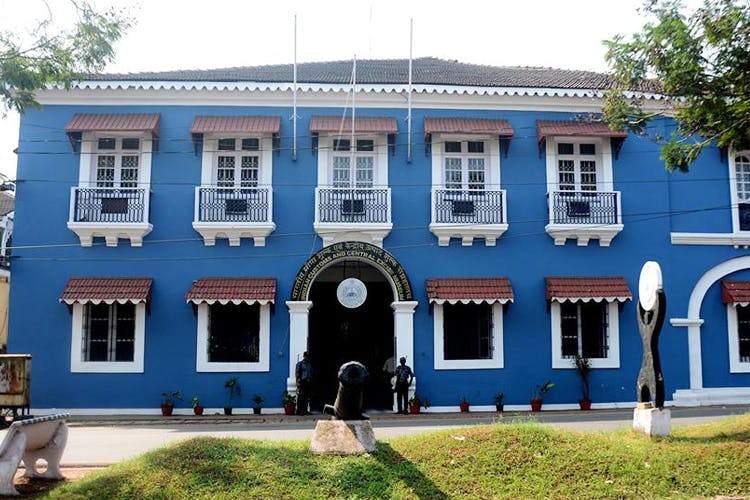If you have time to visit only one museum, then we recommend the Indian Customs & Central Excise Museum. Why? Because you will only find it in Goa. It is a first-of-its-kind museum, and is a great place to see the evolution of the Customs & Excise practices from ancient times till date. The building itself is a heritage property, now popularly called the ‘Blue Building’. It comes from ‘Indigo’ dye, a major commodity that was traded during the Portuguese rule and its bright blue colour exterior.
It displays some rare items seized from smugglers over decades, if not centuries. Sourced from customs warehouses across the country, it displays the craftiness employed by smugglers to avoid customs duties over centuries. It also showcases how it has been instrumental in protecting the culture and natural heritage by rescuing stolen artefacts. And not to mention also the lives saved by seizing goods that were illegal, be it guns, bombs, drugs etc.
Some of the most prized items in the museum include the gold-gilded idol of Jambala. Smuggled into India from Nepal, it was seized by customs officials in Gorakhpur. The other one could be the priceless, handwritten copy of the Ain-e-Akbari, which was seized by customs officials in Patna, while smugglers were trying to take it out of the country.
The ground floor gallery has various displays including artefacts, wildlife pieces and the modus operandi of smugglers and the first-floor gallery is for central excise and narcotics items.
The most fun section at the museum has to be the ‘Gallery of Wits’, showcasing the machinations of smugglers and how they were caught by the Customs officers. The heritage gallery explains through models the gradual evolution of customs and moves over thousands of years going back to Indus Valley civilisation. During which time, a dock in Lothal (now in Gujarat), the tax was collected from ships coming into the port even in those times.
Prominently also displayed are how smugglers use opium to manufacture heroin and other drugs, and a lab showing how these drugs are tested by excise and customs officials. Then a salt hedge which was built by the British across the country, primarily to collect the salt tax.

